Spatial Equity with Census Population Data vs. Floating Population Data: The Distribution of Earthquake Evacuation Shelters in Daegu, South Korea
Abstract
:1. Introduction
2. Equity Evaluation Method for Public Facility Services
2.1. Literature Review of Equity on Facility Location Selection
2.2. Lorenz Curve and Gini Coefficient
3. Methods and Materials
3.1. Methods
3.2. Study Area
3.3. Data
4. Results
4.1. Equity of Secured Shelter Capacity
4.2. Equity of Evacuation Distance
4.3. Equity of Evacuation Demand
4.4. Equity of Total Evacuation Demand-Weighted Distance
5. Discussion
6. Conclusions
Author Contributions
Funding
Acknowledgments
Conflicts of Interest
References
- Chen, Z.; Chen, X.; Li, Q.; Chen, J. The temporal hierarchy of shelters: A hierarchical location model for earthquake-shelter planning. Int. J. Geogr. Inf. Sci. 2013, 27, 1612–1630. [Google Scholar] [CrossRef]
- Soltani, A.; Ardalan, A.; Darvishi Boloorani, A.; Haghdoost, A.; Hosseinzadeh-Attar, M.J. Criteria for Site Selection of Temporary Shelters after Earthquakes: A Delphi Panel. PLoS Curr. Dis. 2015, 7. [Google Scholar] [CrossRef] [PubMed]
- Liu, Q.; Ruan, X.; Shi, P. Selection of emergency shelter sites for seismic disasters in mountainous regions: Lessons from the 2008 Wenchuan Ms 8.0 Earthquake, China. J. Asian Earth Sci. 2011, 40, 926–934. [Google Scholar] [CrossRef]
- Xu, J.; Yin, X.; Chen, D.; An, J.; Nie, G. Multi-criteria location model of earthquake evacuation shelters to aid in urban planning. Int. J. Dis. Risk Reduct. 2016, 20, 51–62. [Google Scholar] [CrossRef]
- Anhorn, J.; Khazai, B. Open space suitability analysis for emergency shelter after an earthquake. Nat. Hazards Earth Syst. Sci. 2015, 15, 789–803. [Google Scholar] [CrossRef] [Green Version]
- Nappi, M.M.L.; Souza, J.C. Disaster management: Hierarchical structuring criteria for selection and location of temporary shelters. Nat. Hazards 2015, 75, 2421–2436. [Google Scholar] [CrossRef]
- Yu, J.; Wen, J. Multi-criteria satisfaction assessment of the spatial distribution of urban emergency shelters based on high-precision population estimation. Int. J. Dis. Risk Sci. 2016, 7, 413–429. [Google Scholar] [CrossRef] [Green Version]
- Wang, D.; Xi, M.; Chen, Y. A Dynamic Shelter Location and Victim Resettlement Model Considering Equitable Waiting Costs. Int. J. Environ. Res. Public Health 2020, 17, 471. [Google Scholar] [CrossRef] [Green Version]
- Bayram, V.; Yaman, H. A stochastic programming approach for shelter location and evacuation planning. RAIRO-Oper. Res. 2018, 52, 779–805. [Google Scholar] [CrossRef] [Green Version]
- Alçada-Almeida, L.; Tralhao, L.; Santos, L.; Coutinho-Rodrigues, J. A multiobjective approach to locate emergency shelters and identify evacuation routes in urban areas. Geogr. Anal. 2009, 41, 9–29. [Google Scholar] [CrossRef]
- Mostajabdaveh, M.; Gutjahr, W.J.; Sibel Salman, F. Inequity-averse shelter location for disaster preparedness. IISE Trans. 2019, 51, 809–829. [Google Scholar] [CrossRef]
- Zhao, L.; Li, H.; Sun, Y.; Huang, R.; Hu, Q.; Wang, J.; Gao, F. Planning emergency shelters for urban disaster resilience: An integrated location-allocation modeling approach. Sustainability 2017, 9, 2098. [Google Scholar] [CrossRef] [Green Version]
- Kim, M.; Kang, S.; Kim, S.; Sohn, H. A Spatial Analysis of Shelter Capacity Using Floating Population. J. Korean Soc. Surv. Geod. Photogramm. Cartogr. 2016, 34, 1–10. [Google Scholar] [CrossRef]
- Deville, P.; Linard, C.; Martin, S.; Gilbert, M.; Stevens, F.R.; Gaughan, A.E.; Tatem, A.J. Dynamic population mapping using mobile phone data. Proc. Natl. Acad. Sci. USA 2014, 111, 15888–15893. [Google Scholar] [CrossRef] [PubMed] [Green Version]
- Lee, W.K.; Sohn, S.Y.; Heo, J. Utilizing mobile phone-based floating population data to measure the spatial accessibility to public transit. Appl. Geogr. 2018, 92, 123–130. [Google Scholar] [CrossRef]
- Wu, H.; Liu, L.; Yu, Y.; Peng, Z. Evaluation and planning of urban green space distribution based on mobile phone data and two-step floating catchment area method. Sustainability 2018, 10, 214. [Google Scholar] [CrossRef] [Green Version]
- Yun, S.B.; Kim, S.; Ju, S.; Noh, J.; Kim, C.; Wong, M.S.; Heo, J. Analysis of accessibility to emergency rooms by dynamic population from mobile phone data: Geography of social inequity in South Korea. PLoS ONE 2020, 15, e0231079. [Google Scholar] [CrossRef] [Green Version]
- Marsh, M.T.; Schilling, D.A. Equity measurement in facility location analysis: A review and framework. Eur. J. Oper. Res. 1994, 74, 1–17. [Google Scholar] [CrossRef]
- Tsou, K.W.; Hung, Y.T.; Chang, Y.L. An accessibility-based integrated measure of relative spatial equity in urban public facilities. Cities 2005, 22, 424–435. [Google Scholar] [CrossRef]
- Li, Q.; Guo, J.; Tan, X.; Chen, J. Equity measurement of spatial layout for emergency shelters with consideration of the needs of vulnerable populations. In Risk Analysis Based on Data and Crisis Response Beyond Knowledge, Proceedings of the 7th International Conference on Risk Analysis and Crisis Response (RACR 2019), Athens, Greece, 15–19 October 2019; CRC Press: Boca Raton, FL, USA, 2019; pp. 86–92. [Google Scholar]
- Sabouhi, F.; Tavakoli, Z.S.; Bozorgi-Amiri, A.; Sheu, J.B. A robust possibilistic programming multi-objective model for locating transfer points and shelters in disaster relief. Transp. A Transp. Sci. 2019, 15, 326–353. [Google Scholar] [CrossRef]
- Kılcı, F.; Kara, B.Y.; Bozkaya, B. Locating temporary shelter areas after an earthquake: A case for Turkey. Eur. J. Oper. Res. 2015, 243, 323–332. [Google Scholar] [CrossRef]
- Ahn, Y.; Chae, Y. Analyzing spatial equality of cooling service shelters, Central district of Seoul metropolitan city, South Korea. Spat. Inf. Res. 2018, 26, 619–627. [Google Scholar] [CrossRef] [Green Version]
- Romero, N.; Nozick, L.K.; Xu, N. Hazmat facility location and routing analysis with explicit consideration of equity using the Gini coefficient. Transp. Res. Part E Logist. Transp. Rev. 2016, 89, 165–181. [Google Scholar] [CrossRef]
- Tao, Z.; Cheng, Y.; Dai, T.; Rosenberg, M.W. Spatial optimization of residential care facility locations in Beijing, China: Maximum equity in accessibility. Int. J. Health Geogr. 2014, 13, 33. [Google Scholar] [CrossRef] [PubMed] [Green Version]
- Gutjahr, W.J.; Fischer, S. Equity and deprivation costs in humanitarian logistics. Eur. J. Oper. Res. 2018, 270, 185–197. [Google Scholar] [CrossRef]
- Wang, X.J.; Zhang, J.Y.; Shahid, S.; ElMahdi, A.; He, R.M.; Wang, X.G.; Ali, M. Gini coefficient to assess equity in domestic water supply in the Yellow River. Mitig. Adapt. Strateg. Glob. Chang. 2012, 17, 65–75. [Google Scholar] [CrossRef]
- Batta, R.; Lejeune, M.; Prasad, S. Public facility location using dispersion, population, and equity criteria. Eur. J. Oper. Res. 2014, 234, 819–829. [Google Scholar] [CrossRef]
- Zhan, S.L.; Liu, N.; Ye, Y. Coordinating efficiency and equity in disaster relief logistics via information updates. Int. J. Syst. Sci. 2014, 45, 1607–1621. [Google Scholar] [CrossRef]
- Ransikarbum, K.; Mason, S.J. Goal programming-based post-disaster decision making for integrated relief distribution and early-stage network restoration. Int. J. Prod. Econ. 2016, 182, 324–341. [Google Scholar] [CrossRef]
- Karsu, Ö.; Morton, A. Inequity averse optimization in operational research. Eur. J. Oper. Res. 2015, 245, 343–359. [Google Scholar] [CrossRef] [Green Version]
- Jang, S.; An, Y.; Yi, C.; Lee, S. Assessing the spatial equity of Seoul’s public transportation using the Gini coefficient based on its accessibility. Int. J. Urban Sci. 2017, 21, 91–107. [Google Scholar] [CrossRef]
- Eiselt, H.A.; Laporte, G. Objectives in location problems. In Facility Location: A Survey of Applications and Methods; Drezner, Z., Ed.; Springer: New York, NY, USA, 1995; pp. 173–176. [Google Scholar]
- Drezner, T.; Drezner, Z.; Guyse, J. Equitable service by a facility: Minimizing the Gini coefficient. Comput. Oper. Res. 2009, 36, 3240–3246. [Google Scholar] [CrossRef]
- Kim, Y.S. Current Status of Old Buildings and Future Tasks; National Assembly Research Service: Seoul, Korea, 2020; Available online: www.nars.go.kr (accessed on 14 August 2020).
- Lu, X.; Bengtsson, L.; Holme, P. Predictability of population displacement after the 2010 Haiti earthquake. Proc. Natl. Acad. Sci. USA 2012, 109, 11576–11581. [Google Scholar] [CrossRef] [PubMed] [Green Version]
- Yabe, T.; Sekimoto, Y.; Tsubouchi, K.; Ikemoto, S. Cross-comparative analysis of evacuation behavior after earthquakes using mobile phone data. PLoS ONE 2019, 14, e0211375. [Google Scholar] [CrossRef] [PubMed]
- Bae, K.Y.; Park, H.J.; Jun, S.M.; Jung, J.C. Evaluating the Location of Tsunami Emergency Shelters for the Children and the Old. J. Korean Soc. Hazard Mitig. 2018, 18, 113–123. [Google Scholar] [CrossRef]
- Lee, S.H.; Goo, S.H.; Chun, Y.W.; Park, Y.J. The Spatial Location Analysis of Disaster Evacuation Shelter for Considering Resistance of Road Slope and Difference of Walking Speed by Age—Case Study of Seoul, Korea. J. Korean Soc. Geospat. Inf. Sci. 2015, 23, 69–77. [Google Scholar] [CrossRef]
- Yim, S.Y.; Kim, H.C.; Kim, D.J.; An, Y.S. A Study on the Estimating of the Floating Population of Walking Street by the Multiple Regression Model—Focusing on Gangnam and Seocho-gu in Seoul. Seoul Stud. 2019, 20, 121–139. [Google Scholar]
- Yao, Y.; Liu, X.; Li, X.; Zhang, J.; Liang, Z.; Mai, K.; Zhang, Y. Mapping fine-scale population distributions at the building level by integrating multisource geospatial big data. I. J. Geogr. Inf. Sci. 2017, 31, 1220–1244. [Google Scholar] [CrossRef]
- Hirokawa, N.; Osaragi, T. Earthquake disaster simulation system: Integration of models for building collapse, road blockage, and fire spread. J. Dis. Res. 2016, 11, 175–187. [Google Scholar] [CrossRef]
- No, W.; Choi, J.; Park, S.; Lee, D. Balancing Hazard Exposure and Walking Distance in Evacuation Route Planning during Earthquake Disasters. ISPRS Int. J. Geo-Inf. 2020, 9, 432. [Google Scholar] [CrossRef]
- Kang, C.; Liu, Y.; Ma, X.; Wu, L. Towards estimating urban population distributions from mobile call data. J. Urban Technol. 2012, 19, 3–21. [Google Scholar] [CrossRef]
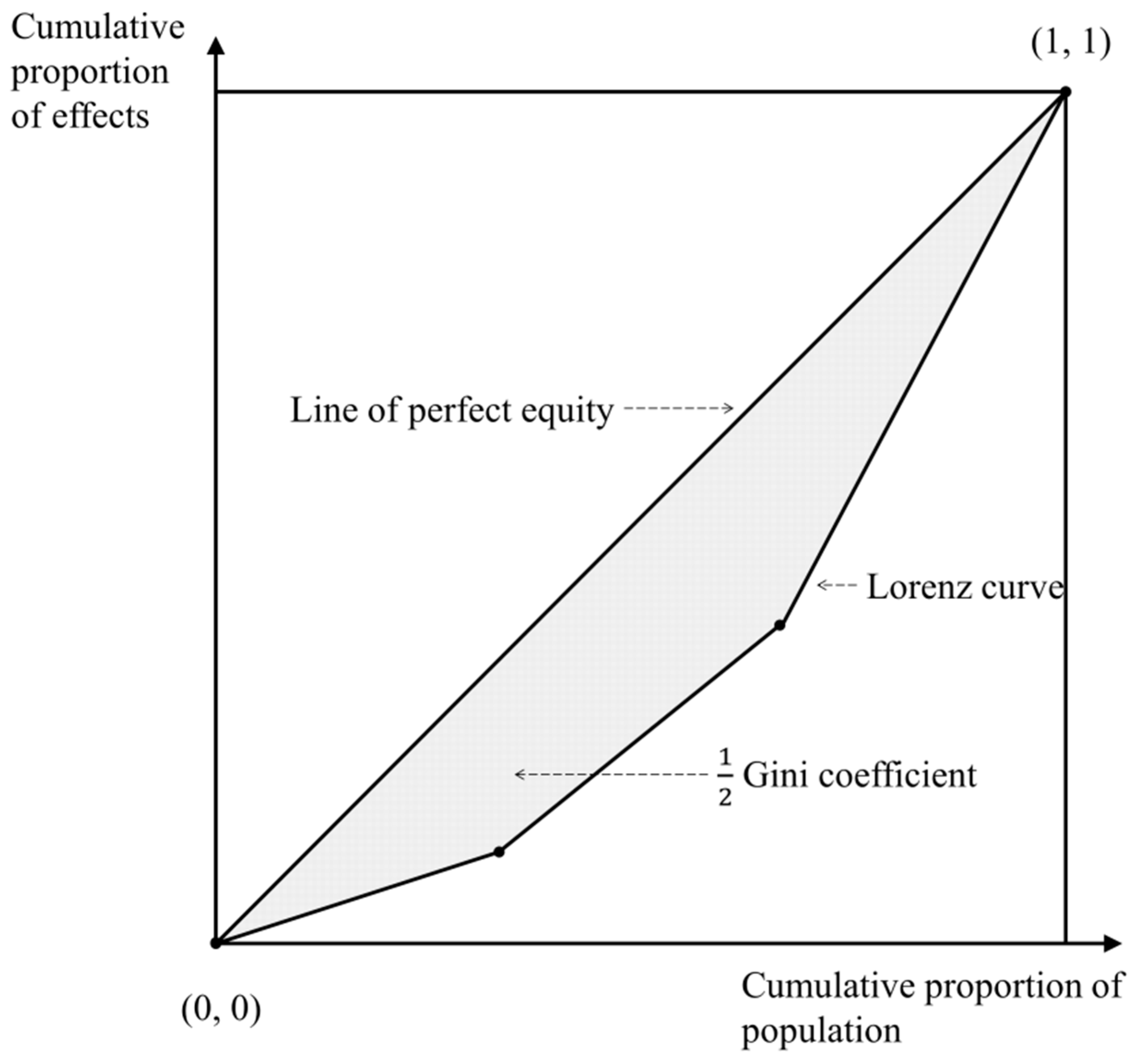
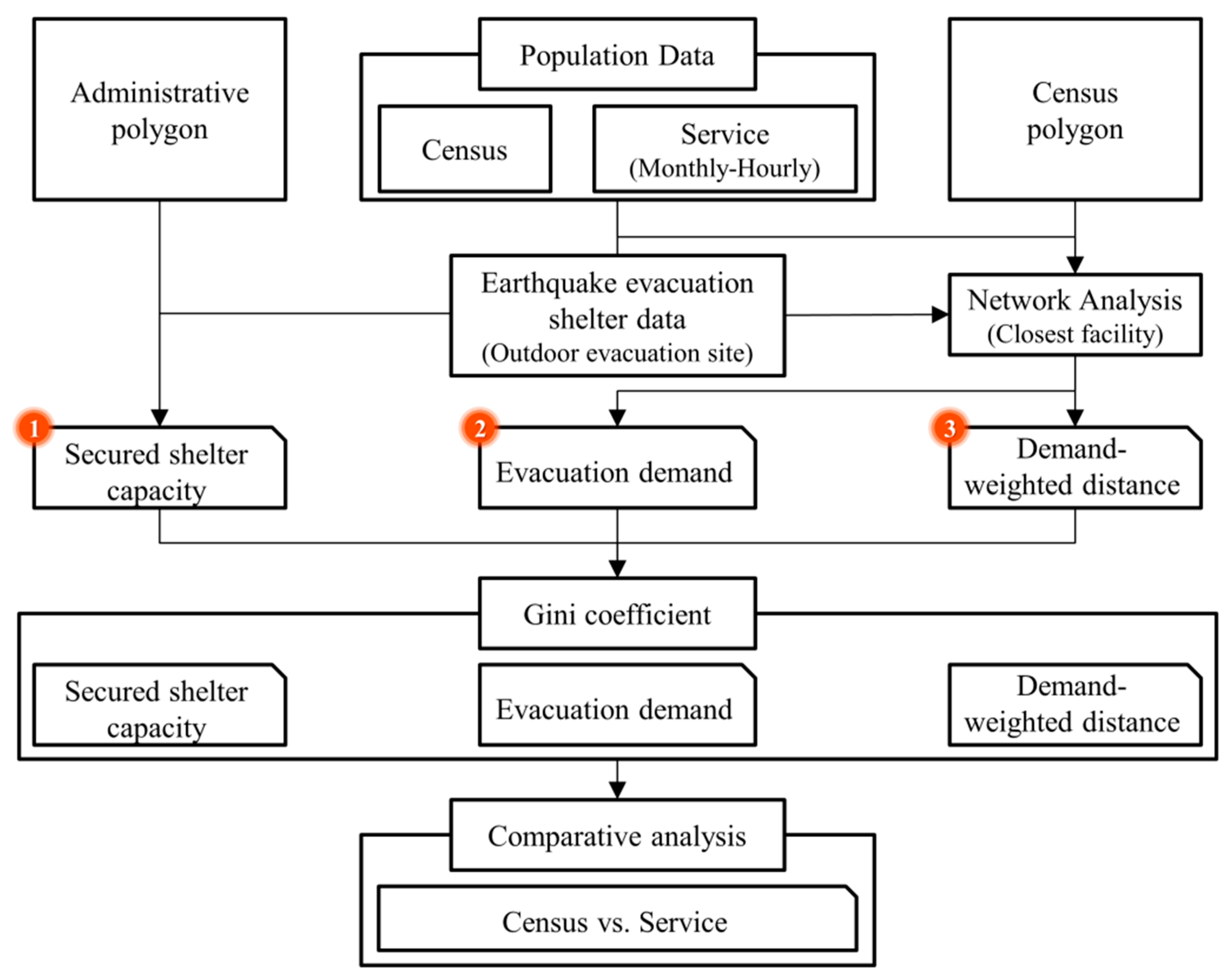



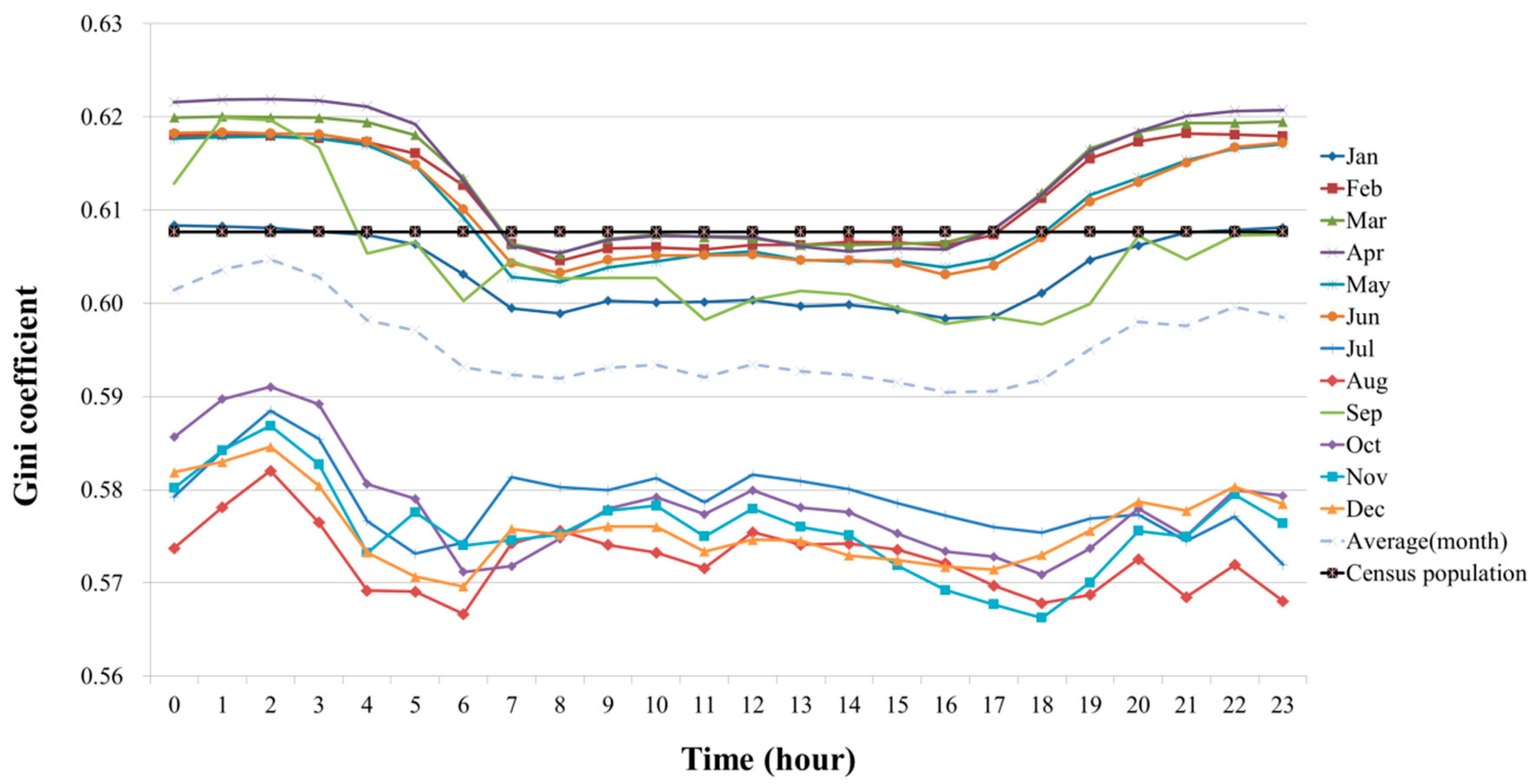
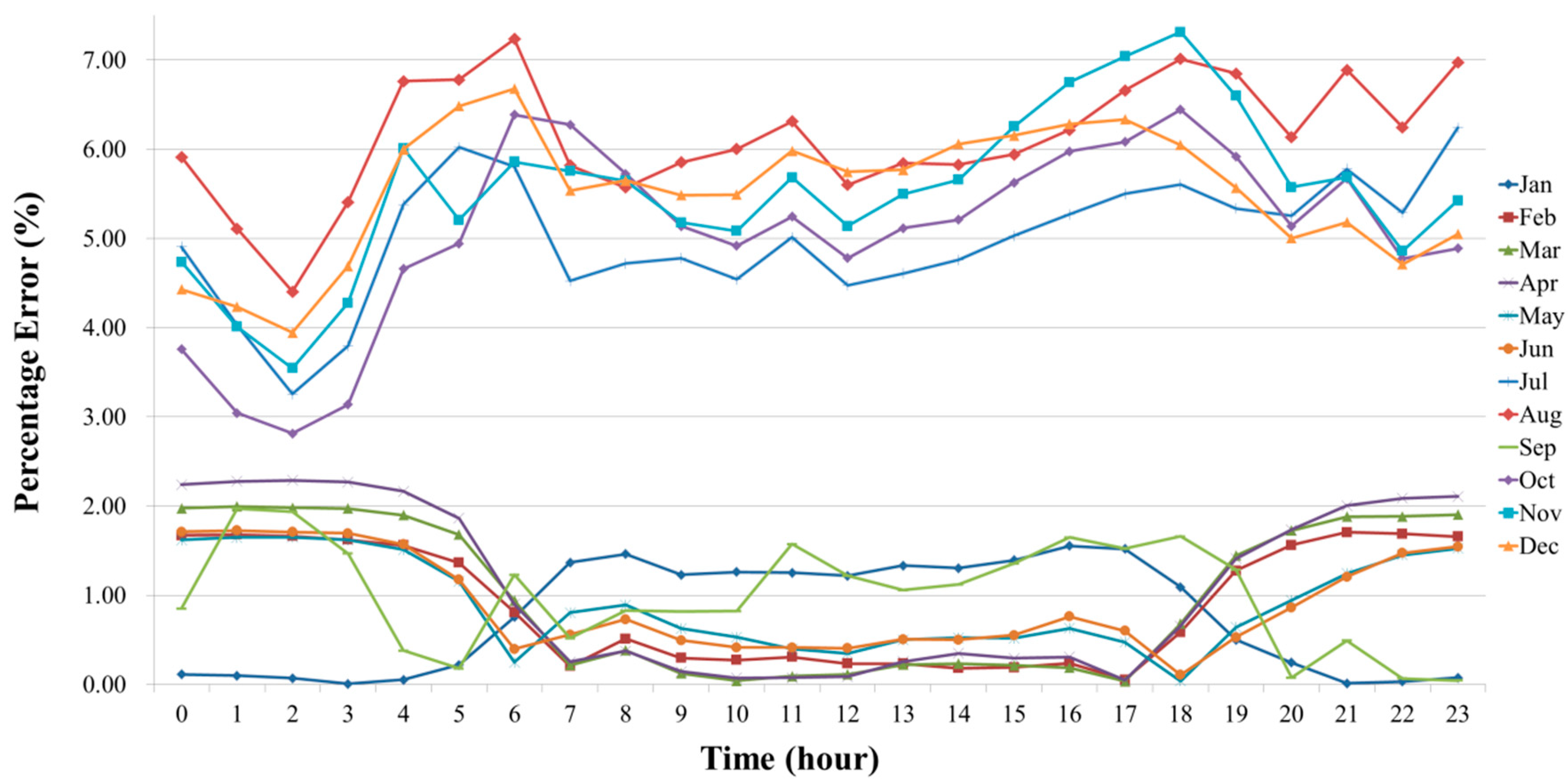

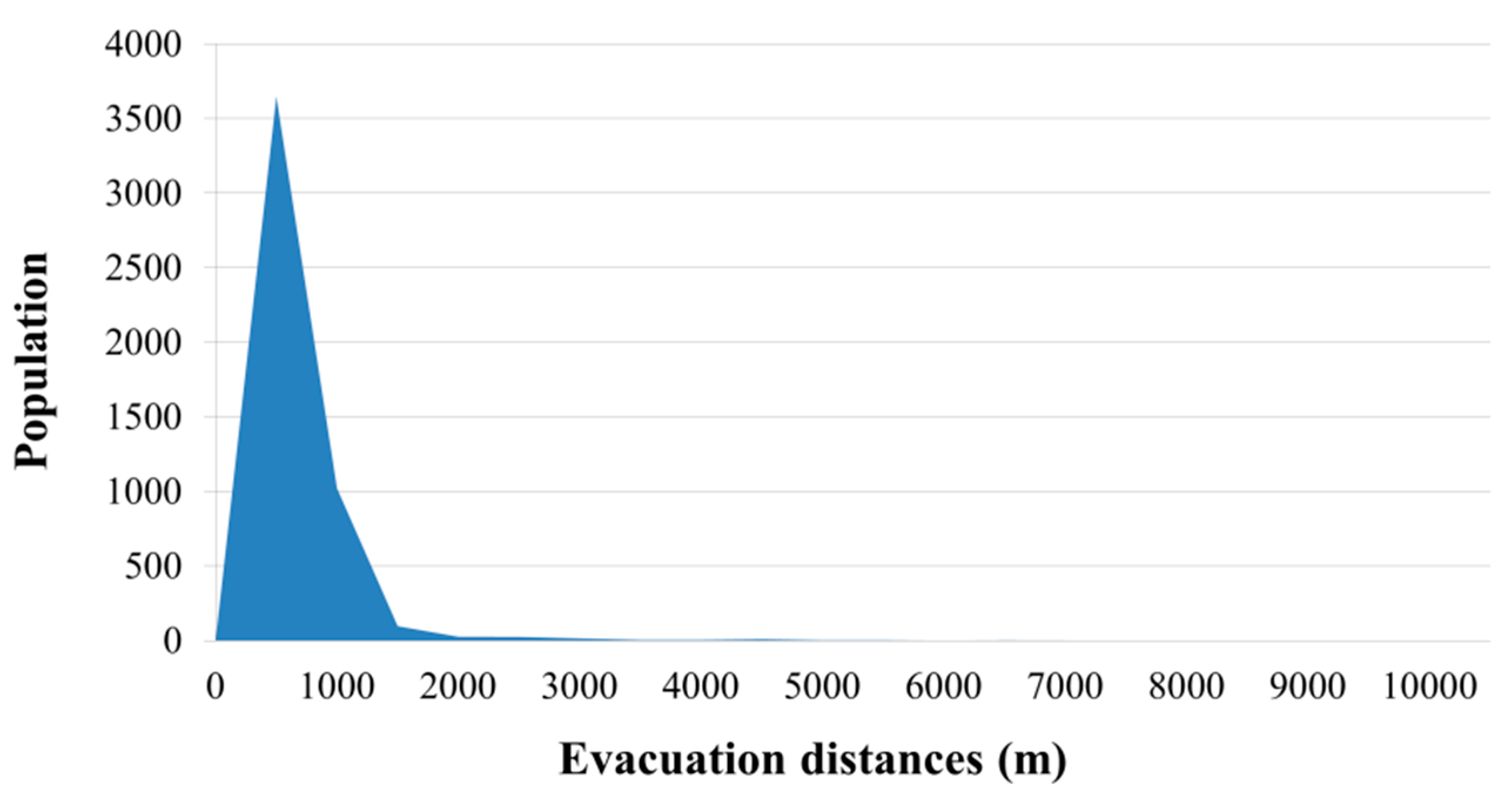
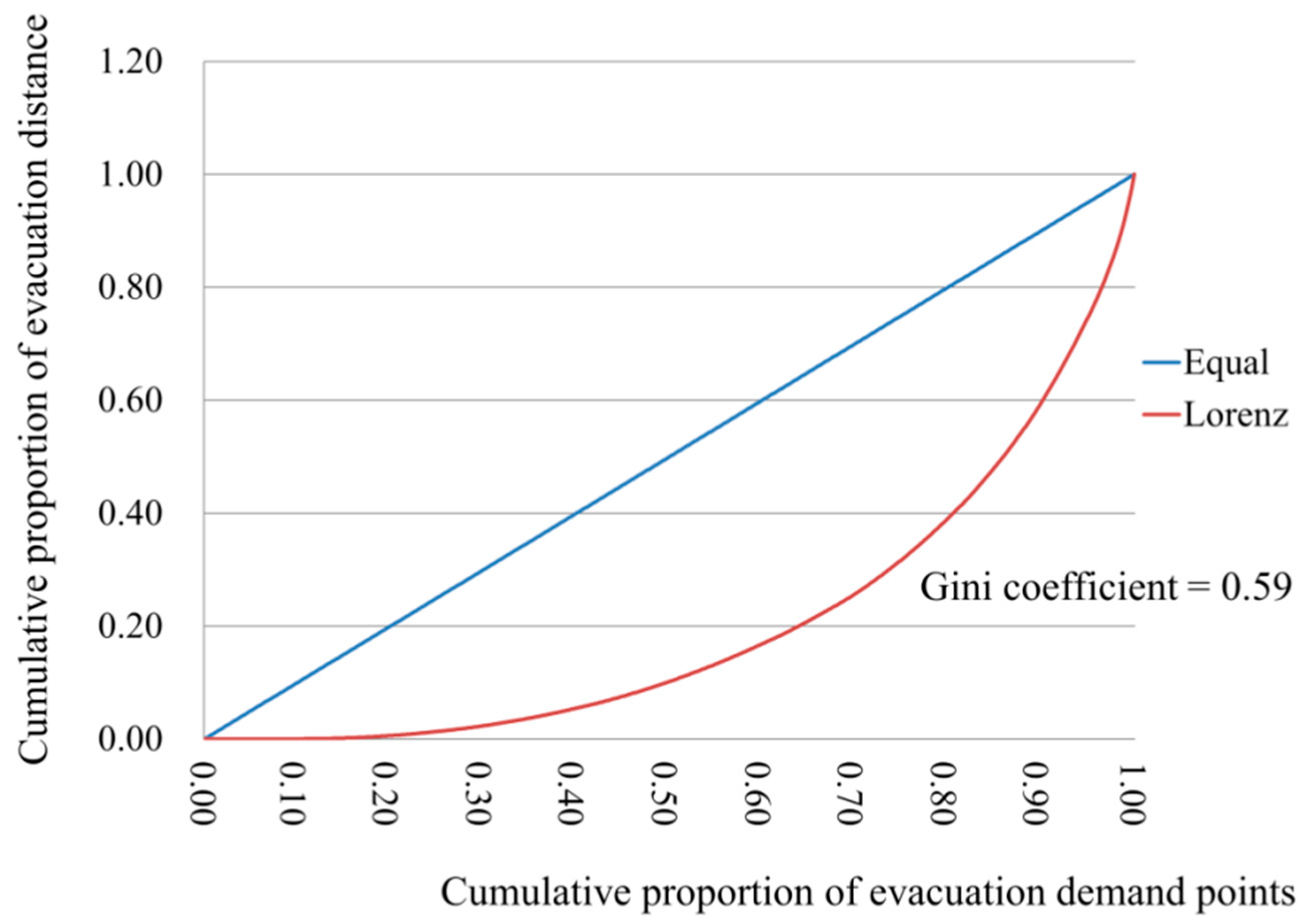
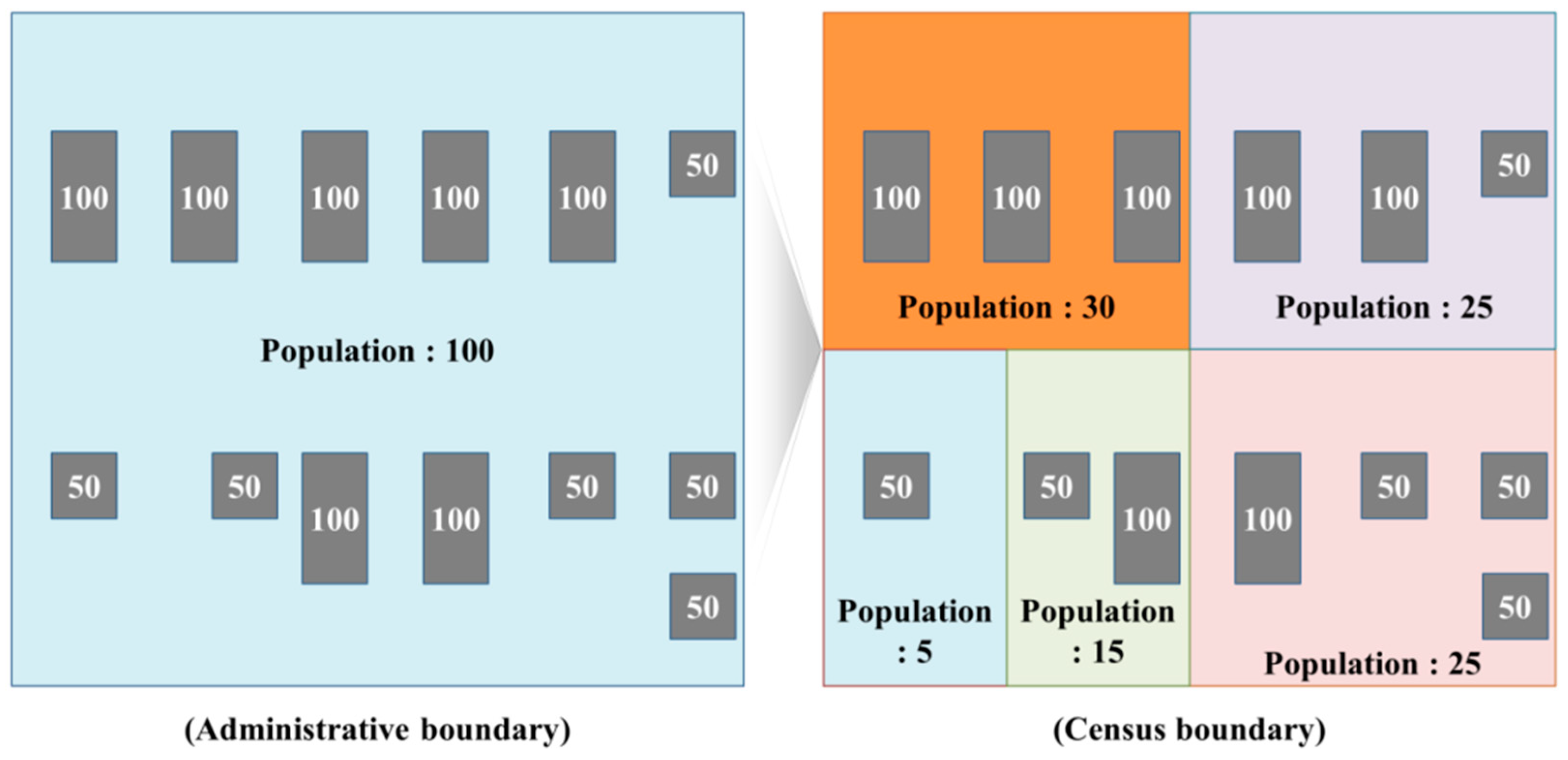

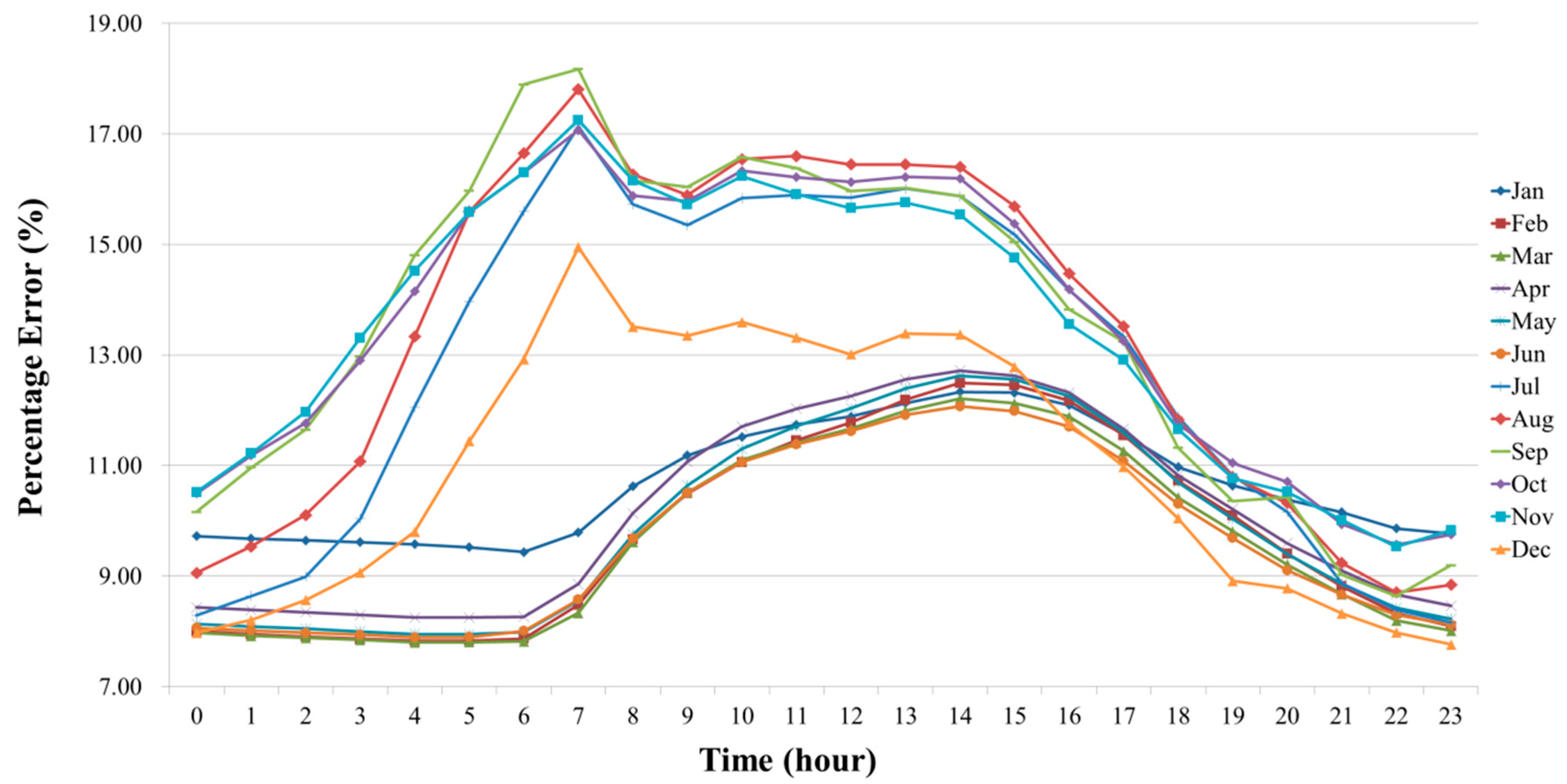
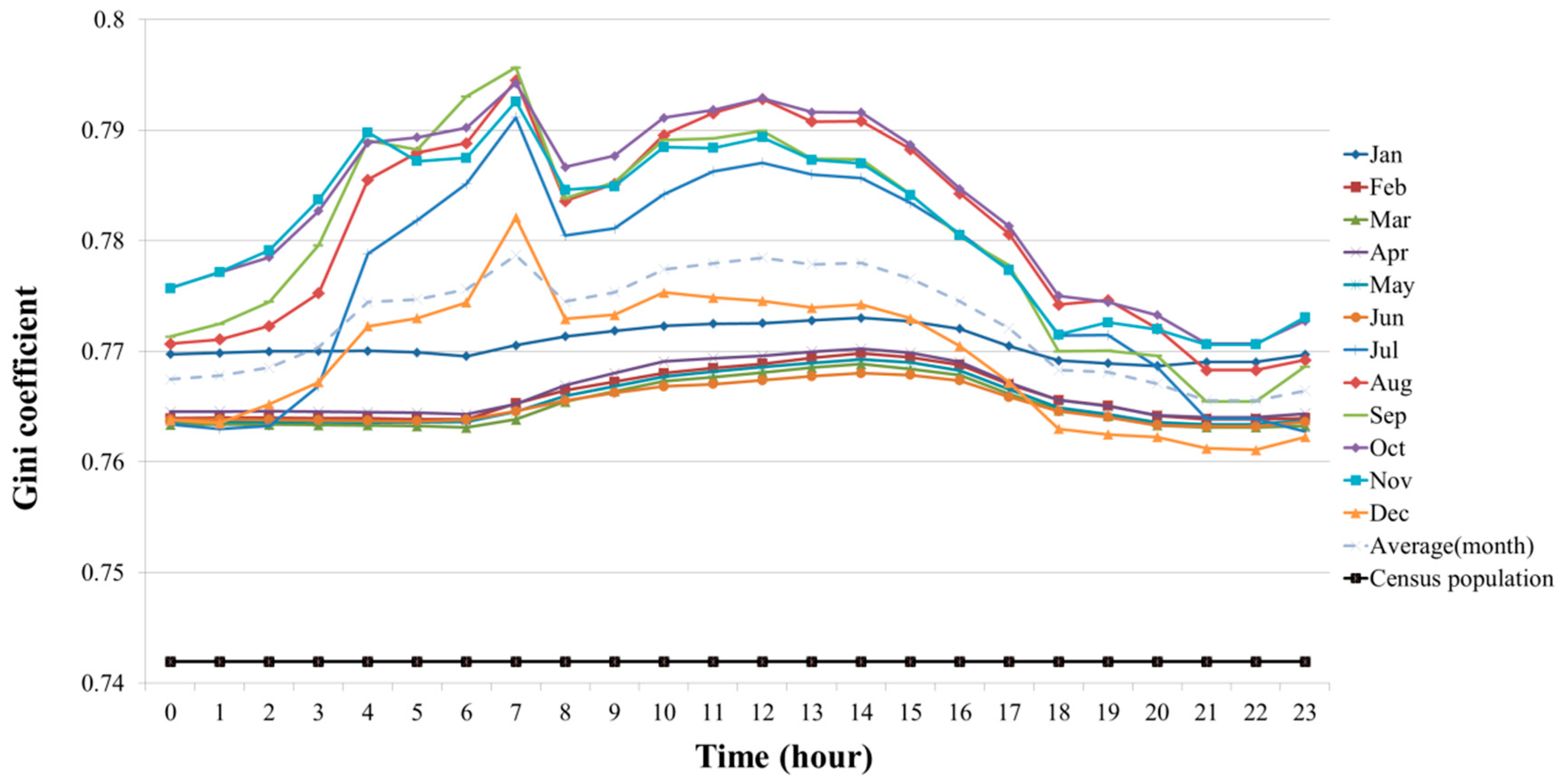
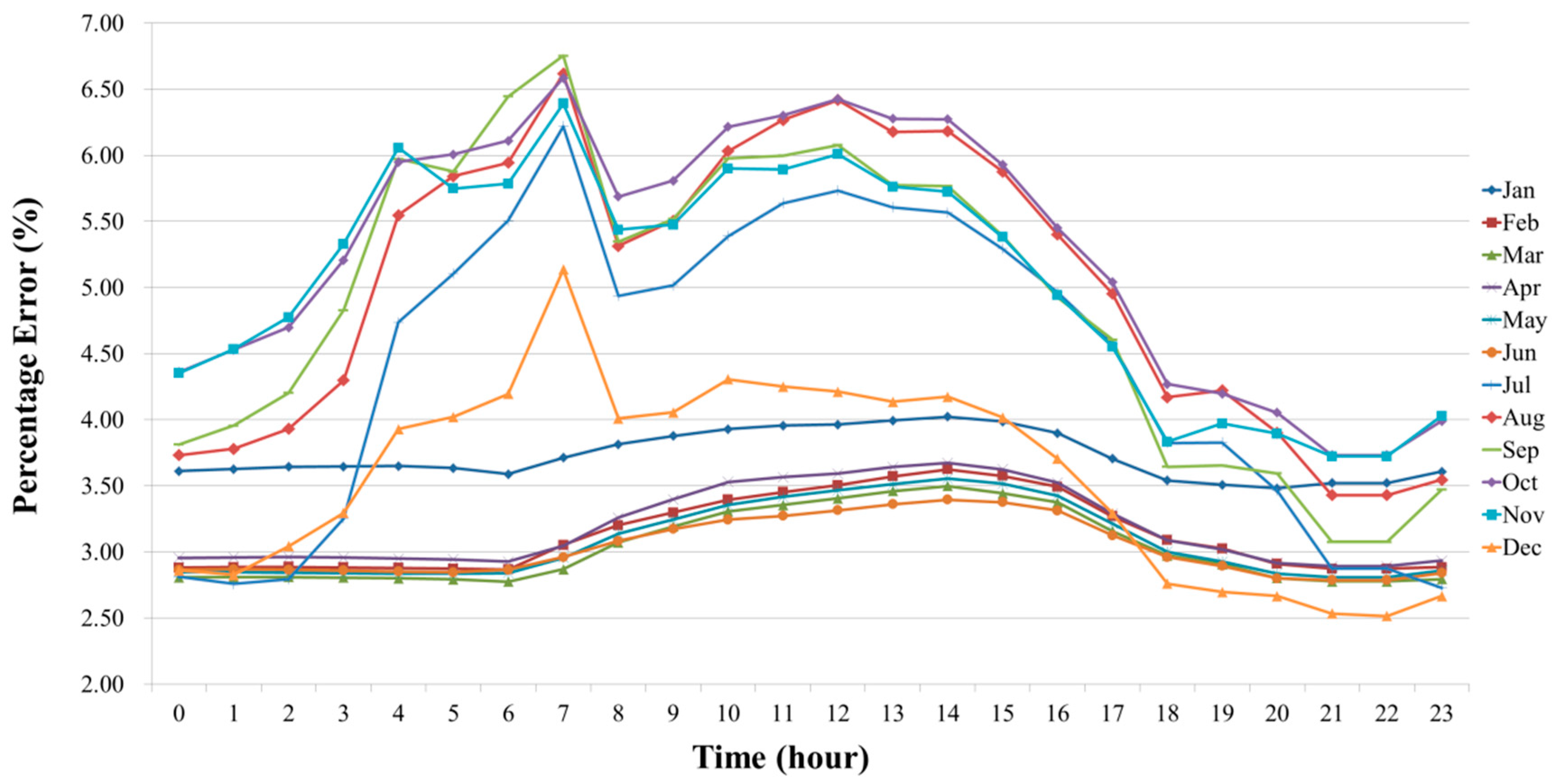
| Type | Author (year) | Facility | Target of Equity Concept |
|---|---|---|---|
| Shelter | Wang et al. (2020) [8] | Earthquake shelter | Waiting Costs |
| Mostajabdaveh et al. (2019) [11] | Open shelter | Evacuation distance (Gini coefficient) | |
| Li et al. (2019) [20] | Earthquake and emergency evacuation shelter | Evacuation distance (standard deviation) | |
| Sabouhi et al. (2019) [21] | Transfer point and shelter | Transportation distance (standard deviation) | |
| Kılcı et al. (2015) [22] | Earthquake temporary shelter | Evacuation distance, utilization of individual shelter | |
| Ahn and Chae (2018) [23] | Cooling service shelter | Percentage of satisfied demand | |
| Non-shelter | Batta et al. (2014) [28] | Public facility | Distance (standard deviation) |
| Romero et al. (2016) [24] | Facility for hazardous materials | Household income (Gini coefficient) | |
| Tao et al. (2014) [25] | Residential care facility | Elderly population, distance (variance) | |
| Zhan et al. (2014) [29] | Disaster relief suppliers | Percentage of satisfied demand | |
| Ransikarbum and Mason (2016) [30] | Supply port and warehouse | Percentage of satisfied demand | |
| Gutjahr and Fischer (2018) [31] | Mobile health care team | Deprivation cost (Gini coefficient) | |
| Wang et al. (2012) [27] | Domestic water supply | Population for domestic water use (Gini coefficient) |
| Target of Equity Analysis | Spatial Boundary | Variable |
|---|---|---|
| Secured shelter capacity | Administrative boundary | Population, capacity |
| Evacuation demand | Census boundary | Population |
| Demand-weighted distance | Census boundary | Population, evacuation distance |
| Division | Number | Area (m2) | Capacity * |
|---|---|---|---|
| Outdoor Evacuation Site | 706 | 7,407,154.94 | 2,244,592 (93.60%) * /7,407,154.94 (308.90%) ** |
| Type | Description | Format | Source | |
|---|---|---|---|---|
| Administrative boundary (‘Haengjeong-dong’ boundary) | ‘Haengjeong-dong’ denotes an administrative district of the Republic of Korea, and is a district established by local governments for administrative convenience of the district in accordance with increase and decrease in the number of residents | Shp | http://data.nsdi.go.kr | |
| Census boundary | Size of one census boundary is about 1/30 of one administrative boundary. It is the smallest statistical boundary unit provided by Statistics Korea. | Shp | http://data.nsdi.go.kr | |
| Population data (as of 2017) | Census | Resident population within the census boundary | Xlsx | http://data.nsdi.go.kr |
| Floating | Active population residing in the small local unit by time and date acquired through mobile location data | Xlsx | https://s4u.daegu.go.kr/introduction/servicePopulation | |
| Outdoor evacuation site data | Location | Location information of outdoor evacuation sites (address) | Text | https://www.safekorea.go.kr |
| Capacity | Capacity information of outdoor evacuation sites (area) | |||
| Building | Location and area of buildings for population distribution estimation | Shp | https://www.juso.go.kr/ | |
| Road centerline | Used for constructing network data set for GIS network analysis | Shp | http://data.nsdi.go.kr | |
| Division | Area of Outdoor Evacuation Site (m2) | Census Population Data | Floating Population Data (ex. as of 1 January 2017 12:00) | ||
|---|---|---|---|---|---|
| Population | Area/Population (m2) | Population | Area/Population (m2) | ||
| min | 0.00 | 2233.00 | 0.00 | 66,649.00 (2149.97 *) | 0.00 (0.00 *) |
| max | 911,128.00 | 90,175.00 | 10.10 | 2,278,747.00 (73,507.97 *) | 0.40 (12.39 *) |
| mean | 53,289.00 | 17,540.00 | 3.04 | 637,946.00 (20,578.91 *) | 0.08 (2.59 *) |
| Division | Evacuation Distance (m) |
|---|---|
| Minimum | 0.00 |
| Maximum | 10,195.07 |
| Mean | 413.34 |
| Division | Evacuation Demand(People) |
| Sum | 2,370,110 |
| Minimum | 0 |
| Maximum | 19,602 |
| Mean | 3357 |
© 2020 by the authors. Licensee MDPI, Basel, Switzerland. This article is an open access article distributed under the terms and conditions of the Creative Commons Attribution (CC BY) license (http://creativecommons.org/licenses/by/4.0/).
Share and Cite
Lee, Y.H.; Lee, J.S.; Baek, S.C.; Hong, W.H. Spatial Equity with Census Population Data vs. Floating Population Data: The Distribution of Earthquake Evacuation Shelters in Daegu, South Korea. Sustainability 2020, 12, 8046. https://doi.org/10.3390/su12198046
Lee YH, Lee JS, Baek SC, Hong WH. Spatial Equity with Census Population Data vs. Floating Population Data: The Distribution of Earthquake Evacuation Shelters in Daegu, South Korea. Sustainability. 2020; 12(19):8046. https://doi.org/10.3390/su12198046
Chicago/Turabian StyleLee, Yoon Ha, Ji Soo Lee, Seung Chan Baek, and Won Hwa Hong. 2020. "Spatial Equity with Census Population Data vs. Floating Population Data: The Distribution of Earthquake Evacuation Shelters in Daegu, South Korea" Sustainability 12, no. 19: 8046. https://doi.org/10.3390/su12198046






